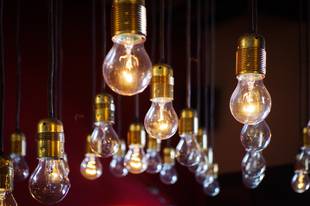
There are many different ways to make electricity. Each method involves the use of a turbine to spin and convert kinetic energy into electricity. Electricity is made when a turbine moves a large magnet around a very large wire. This movement serves to electrify the wire. Electricity is then pushed away from this generator through special transformers.
Steam, combustion gases, and water are commonly used to turn turbines for the creation of electiricity. Wind may be used as well.
When steam is used, fossil fuels, such as oil, gas, or coal, are often burned for the purpose of creating steam from water. For nuclear power source, uranium is split apart, creating heat energy. The heat energy is applied to water, creating steam. The steam is then used to spin the turbine and create electricity.
Combustion gases may be used to create electricity. In such cases, a gas turbine is employed in burning natural gas or low-sulfur oil. The fuel is mixed with compressed air and burned in combustion chambers. In these chambers, high-pressure combustion gases form and are then applied to the turbine, causing it to turn.
In hydroelectric power plants, water is made to fall on the blades of a turbine, turning it. This requires an incredibly large amount of water that is usually obtained from a reservoir or a lake. The body of water must be located higher than the turbine in order to turn its enormous blades.
Once created, electricity travels to a transformer and is changed from low to high-voltage electricity. This is an important step, as it gives electricity the jolt it needs to travel from the power plant to its ending destinations. High-voltage electrical current moves within thick transmission lines.
Travelling current is kept high above the ground by transmission towers and insulators are employed for the purpose of keeping electricity in the transmission lines. Transmission towers and insulators are vital for ensuring the safe transportation of electricity. Once electricity reaches its destination, its travel is not over. It must travel back to the generator through another set of wires.

















